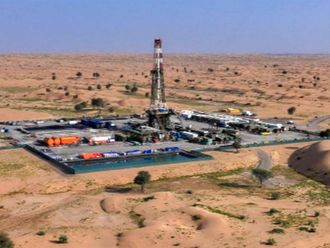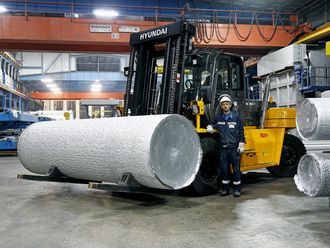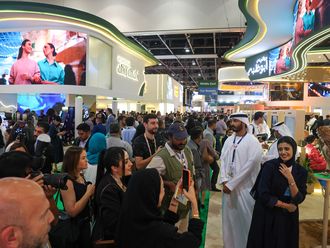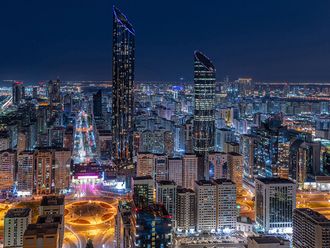Dubai: Elon Musk has launched an ambitious move that takes Tesla into the energy storage market, placing high hopes for both his company and the environment in a four-foot-tall domestic battery that can be mounted on a garage wall.
The $3,500 “Powerwall” is aimed at improving energy reliability for solar-powered homes and businesses, increasing capacity and backup electricity with a 7 kWh or 10 kWh cell. “The battery can store surplus solar energy not used at the time it is generated and use that energy later when the sun is not shining,” Musk said. “It is very important to smooth out energy generation.”
Alongside residential customers, businesses that have pledged to adopt the Tesla Energy system include Amazon Web Services and Target. A larger, 100 kWh version of the cells is aimed at utility companies to help manage intermittent electricity supplies from renewable sources such as wind and solar.
After taking to the stage in Los Angeles more than an hour later than scheduled, Musk hailed Tesla Energy as the “missing piece” in renewable energy that could herald “a fundamental transformation in how the world works”. He also said the Powerwall, available in a range of colours, “looks like a beautiful sculpture on the wall”.
The move opens up new markets for Tesla at a time when some analysts have questioned whether its automotive business can meet its sales targets for the year and its mass-market Model 3 is still at least two years away. Critics of the scheme say its growth will rely on state subsidies and adds pressure to the build-out of its “Gigafactory” battery plant in Nevada, which is still under construction.
“Tesla is not just an automotive company, it’s an energy innovation company,” Musk said in a press release on Thursday detailing the new products. He likened the shift from traditional grid-based electricity to energy storage to the move from landlines to mobile phones, especially for people in developing countries who lack reliable sources of energy but could “leapfrog” the rest of the world in adopting the new battery technology.
The Powerwall will begin shipping in three or four months in limited quantities, before production is scaled up next year when it moves from a Fremont factory to the Gigafactory. “There will need to be many Gigafactories in the future,” Musk said, if the technology is to become widely enough used to tackle climate change. “This is not something that we expect Tesla to do alone.”
He said the company would “open source” its factory and battery designs, as it has with other technologies, to allow its innovations to be shared.
Analysts at Navigant Research have estimated that revenues from grid energy storage could total $68.5 billion between 2014 and 2024, driven in part by the falling cost of lithium-ion batteries.
Tesla is entering what is already a competitive market for energy storage, including from much larger rivals such as Samsung, GE and Saft.
— Financial Times












